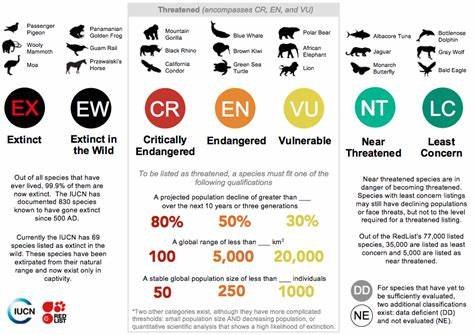The IUCN Red List for Dummies
The Red List, also known as the IUCN Red List of Threatened Species, is a global list of species that are at risk of extinction. It is compiled and maintained by the International Union for Conservation of Nature (IUCN), a global organization that works to conserve and protect the natural world.
The Red List categorizes species into eight categories based on their level of risk: Extinct, Extinct in the Wild, Critically Endangered, Endangered, Vulnerable, Near Threatened, Least Concern, and Data Deficient. The categories are based on a combination of factors, including population size, population trend, habitat loss, and other threats to the species' survival.
The Red List is a valuable tool for conservationists, as it helps to identify species that are most in need of protection and conservation efforts. It also serves as a warning about the state of the natural world and the ongoing loss of biodiversity.
One of the main goals of the Red List is to provide information that can be used to develop conservation strategies and policies to protect threatened species. This includes working with governments, businesses, and civil society organizations to protect critical habitat, reduce threats to species, and promote sustainable development.
The Red List is constantly being updated as new information becomes available, and it serves as a reminder of the urgent need to take action to protect the incredible diversity of life on our planet. If we don't take action now, many species may be lost forever.
Opendata for Biodiversity
Open data is increasingly recognized as a valuable resource that can drive innovation, transparency, and economic growth. By making data freely available for all to access, use, and distribute, open data initiatives enable a wide range of stakeholders to benefit from the information and insights that can be derived from data.
Open data can also promote transparency and accountability, particularly when it comes to the operations of governments and other public institutions. By making data available on issues such as spending, performance, and policy outcomes, open data can enable citizens and other stakeholders to hold these organizations to account and ensure that they are meeting their obligations.
Overall, open data has the potential to drive significant benefits for society by making information more widely available and enabling the development of new ideas and solutions. As such, it is important that governments, organizations, and individuals continue to support and promote open data initiatives.
We at Natural Solutions belive in opendata and provide software solutions for biodiversity please get in touch and setup a meeting.















